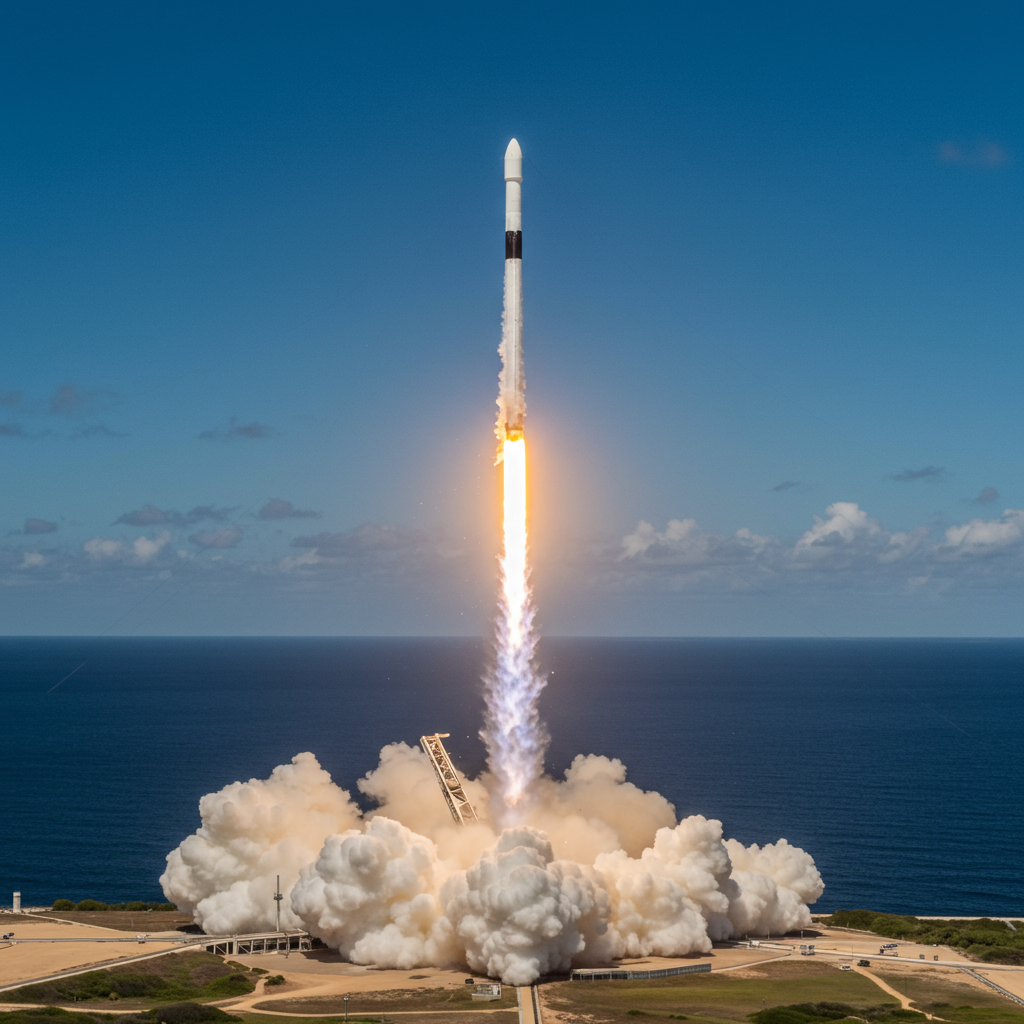The International Space Station (ISS) is poised to welcome a new wave of pioneering research as NASA’s SpaceX-33 commercial resupply mission blasts off. Scheduled for a late August launch from Florida’s Space Coast, this crucial flight will deliver cutting-edge experiments aimed at both advancing deep-space exploration and yielding transformative benefits for life on Earth. From regenerating nerves to battling bone loss and even forging metals in orbit, the Dragon spacecraft carries a diverse cargo poised to redefine humanity’s understanding of biology and manufacturing in extreme environments.
This isn’t just another delivery; it’s a testament to the ISS’s nearly 25-year legacy as humanity’s unique orbital laboratory. With over 4,000 experiments conducted by scientists from more than 110 countries, the station continues to provide an unparalleled platform for discovery. The microgravity environment offers conditions impossible to replicate on Earth, enabling breakthroughs that serve future missions to the Moon and Mars, while also delivering tangible improvements for people globally.
The Unseen Frontier: Why Microgravity Matters
On Sunday, August 24, 2025, at approximately 2:45 a.m. EDT, a SpaceX Falcon 9 rocket is slated to propel the Dragon spacecraft from Launch Complex 40 at Cape Canaveral Space Force Station. Following a northeast trajectory, the Dragon will journey to the orbiting laboratory, packed with vital supplies and critical scientific investigations. A notable enhancement for this SpaceX-33 mission is Dragon’s new propulsion capability. Once docked, it can provide a direct boost to the ISS, incrementally raising its orbit over time.
The unique conditions aboard the ISS allow scientists to study fundamental processes without the interference of gravity. This has profound implications for fields ranging from biology and biotechnology to advanced manufacturing and materials science. Each experiment on this mission is carefully designed to leverage these one-of-a-kind orbital insights.
Pioneering Medical Breakthroughs in Orbit
The SpaceX-33 mission is particularly rich with biomedical investigations, pushing the boundaries of what’s possible in regenerative medicine and human health. These studies hold immense promise for both astronauts and patients on Earth.
Regenerating Nerves: The “Better Nerve Bridge”
One groundbreaking experiment involves Auxilium Biotechnologies Inc., which aims to bioprint implantable nerve devices in microgravity. These devices are designed to support nerve regrowth following traumatic injuries. Current treatments often offer limited success in restoring nerve function, leaving patients with significant physical impairment.
Using living cells and proteins as raw materials for 3D bioprinting, scientists anticipate creating a device that could accelerate recovery. Jacob Koffler, principal investigator at Auxilium Biotechnologies, plans to print up to 18 implants during this mission. Preclinical studies are targeted for 2026 and 2027. Tissues bioprinted in space may exhibit higher quality than those made on Earth, potentially paving the way for future in-space manufacturing of medical devices for all.
Cultivating Organs: Vascularized Liver Tissues
Researchers from the Wake Forest Institute of Regenerative Medicine are also advancing bioprinting technology. Led by principal investigator James Yoo, their team will examine how bioprinted liver tissue containing blood vessels develops in microgravity. A previous mission confirmed the survival and function of such tissues in space.
This current investigation seeks to determine if the space environment actively improves tissue development. Accelerating the formation of vascular networks is a primary goal, as these blood vessels are crucial for maintaining tissue functionality and health. Success in this area could significantly advance the eventual production of entire functional organs for transplantation on Earth, revolutionizing transplant medicine.
Stem Cells for Healing: Advanced Manufacturing
Another exciting biological investigation comes from Cedars Sinai Medical Center, led by Arun Sharma. This research explores whether human induced pluripotent stem cells (iPSCs) can proliferate faster in microgravity. iPSCs are vital for developing therapies for a wide range of conditions, including heart disease and neurodegenerative disorders.
If the space environment accelerates iPSC production, it could lead to the manufacturing of larger quantities of these critical cells. This would drastically accelerate the availability of cell-based treatments, addressing a major bottleneck in regenerative medicine. It represents a significant step towards scalable bio-manufacturing in low Earth orbit.
Battling Bone Loss: A Universal Challenge
Astronauts face unique physiological challenges during long-duration spaceflight, with bone loss being a significant concern. The Mayo Clinic, under the leadership of principal investigator Abba Zubair, is leading an important study focused on this issue.
Their investigation, known as Microgravity Associated Bone Loss-B (MABL-B), delves into the fundamental mechanisms behind bone density reduction in microgravity. Astronauts can experience a substantial loss, typically between 1% and 2% per month, even with rigorous exercise. While bone function is well understood on Earth, the precise reasons for this rapid weakening in space remain a scientific mystery.
The MABL-B experiment focuses on mesenchymal stem cells (MSCs), crucial for building new bone tissue. Scientists hypothesize that the protein Interleukin-6 (IL-6) plays a pivotal role in promoting bone problems in space. Previous data suggested that microgravity enhances problematic IL-6 signaling, leading to increased bone degradation. This mission will test methods to block this pathway. Crew members will culture stem cells alongside other bone cells for 19 days, with samples returning to Earth for comprehensive analysis.
The potential benefits of this research are twofold. It could lead to targeted treatments protecting astronauts on future long-duration missions to the Moon and Mars. On Earth, insights into IL-6’s effect on bone health in microgravity could revolutionize therapies for age-related bone loss, benefiting millions suffering from osteoporosis and certain cancers.
Forging the Future: Metal 3D Printing in Space
As humanity ventures further into space, the ability to manufacture parts and tools on demand becomes critical. The European Space Agency (ESA) is building on prior successes with its Metal 3D Printer investigation, collaborating with Airbus Defence and Space SAS. This project is a crucial step towards enhancing mission autonomy and reducing reliance on Earth-based resupply.
While plastic 3D printing has seen strides on the ISS, it’s not suitable for all applications. This investigation will print several small metal cubes using different strategies. These will help determine the optimal approach for metal printers in the space environment. Additionally, two small nozzles will be printed to assess the quality of spacecraft parts produced in microgravity. The quality of these space-printed items will be meticulously compared against reference prints made on the ground. This ongoing research is vital for developing robust in-space manufacturing and materials recycling capabilities.
Enhancing Orbital Operations: Data Processing in LEO
Beyond the biological and manufacturing experiments, the SpaceX-33 mission also supports advancements in orbital infrastructure. Red Hat, in collaboration with Axiom Space, is working on an “Orbital Data Center” project. This initiative aims to enhance in-orbit data storage and edge-processing capabilities using the Red Hat Device Edge platform.
The goal is to enable near real-time analytics for experiments operating in space. This is critical for scaling research and development, as well as manufacturing on future space platforms. Addressing the growing need for autonomous data processing away from Earth, this project will significantly improve the efficiency and responsiveness of orbital operations.
Frequently Asked Questions
What is the primary goal of the NASA SpaceX-33 resupply mission?
The main objective of the NASA SpaceX-33 mission is to deliver essential supplies, equipment, and a diverse array of scientific investigations to the International Space Station. These experiments are carefully selected to leverage the unique microgravity environment. They aim to advance human understanding in areas like regenerative medicine, bone health, and in-space manufacturing. Ultimately, this research supports future deep-space exploration and provides tangible benefits for humanity on Earth.
Where can I learn more about the research aboard the International Space Station?
To delve deeper into the groundbreaking research happening aboard the International Space Station, you can visit NASA’s official ISS science pages. These platforms offer comprehensive information, updates, and resources on various experiments and their findings. Additionally, organizations like the ISS National Laboratory provide insights into how researchers from diverse sectors access and utilize this unique orbital laboratory for scientific and technological advancements.
How will the research from this mission benefit people on Earth?
The research aboard the SpaceX-33 mission has profound implications for Earth. For instance, studies on bone loss in microgravity could lead to new treatments for osteoporosis. Bioprinting research for nerves and liver tissues aims to revolutionize regenerative medicine, potentially enabling in-space manufacturing of medical devices or even organs for transplantation. Advancements in metal 3D printing could lead to more efficient and adaptable manufacturing processes, while improved in-orbit data processing could accelerate discoveries that impact various industries back on Earth.
Conclusion: Humanity’s Orbital Leap Forward
The upcoming NASA SpaceX-33 mission represents a vital step in humanity’s ongoing journey of discovery. By delivering a rich payload of scientific instruments and materials, it reinforces the International Space Station’s indispensable role as a global research hub. Each experiment, whether focused on biological processes or advanced manufacturing, holds the potential to unlock secrets that benefit both our ambitious ventures into the cosmos and the daily lives of people across our planet. As the Dragon spacecraft embarks on its journey, it carries not just cargo, but the collective hopes for a healthier, more advanced, and more autonomous future, driven by the unique power of orbital science. The continuous work aboard the ISS is preparing us for the ultimate human exploration missions to the Moon and Mars, truly making it humanity’s laboratory in space.




